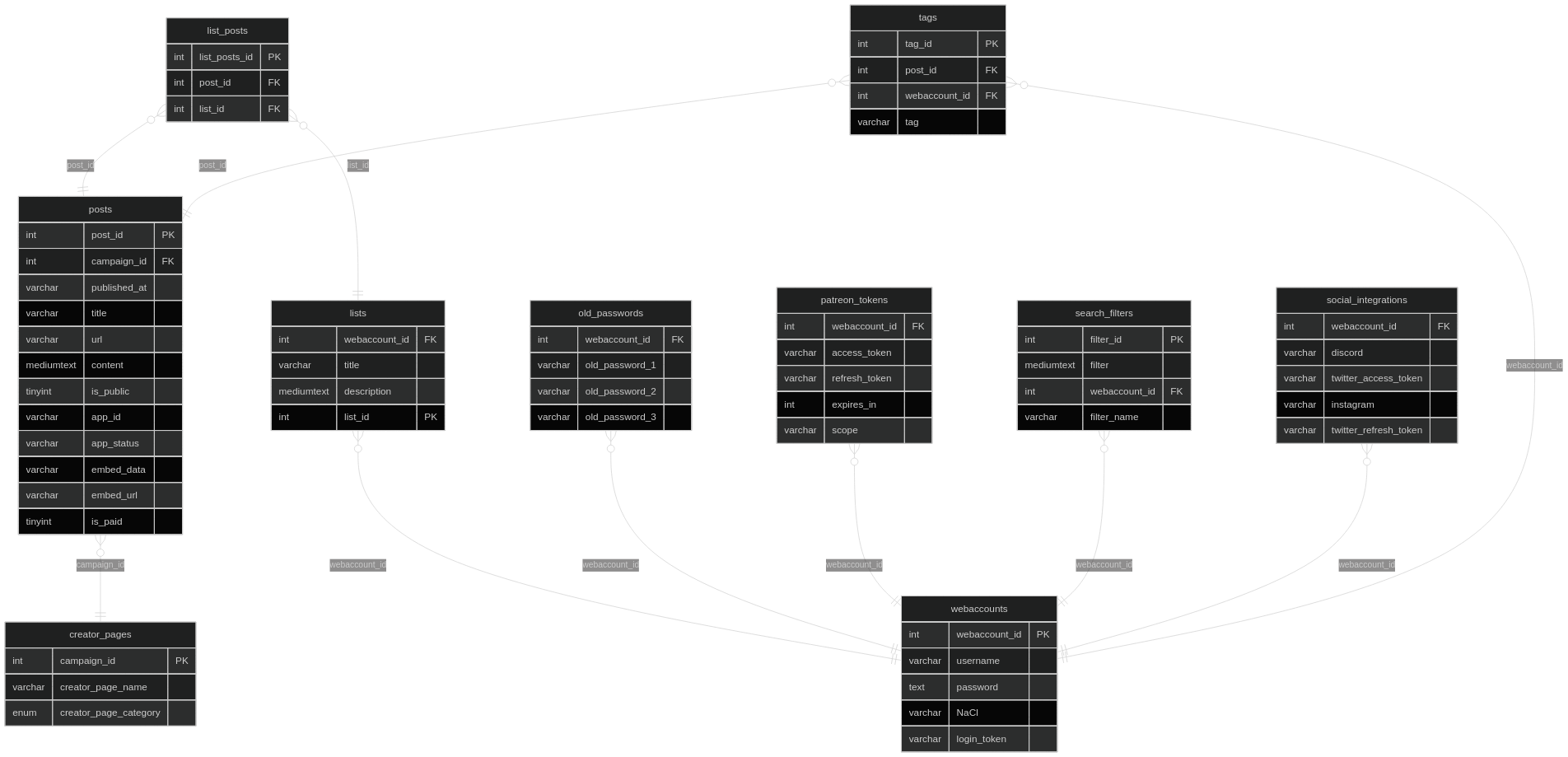Design
Class Diagram
Gateway

Click this link
if you are unable to view the detail within the gateway diagram. Make sure you either enable "Pan & Zoom" or click "Full Screen" in the top right in order to fully view the diagram.
Database Diagram
The database mostly focuses on the profile table, with it only having 1 instance per the multiple instances of objects in the posts. The profile table holds the main information about a user of Patreon Shout, such as their username, and who they follow. The profile table has a direct 1-to-1 relationship with the patreon_info table, which holds the user creator information that we may use to get the posts. If the user is not a creator, we will have an instance of an object relating to the profile so we could see if they are registered as a creator or as a user with Patreon Shout. Furthermore, the lists hold all the information needed for the user to create lists of creators that would overlap their main feed. This includes the name of the list, the creator that they added to the list, and the user that created the list. Finally, we have the posts table that holds the information of the post that we store to publish on different social media, or to publish it into our website. It will have the creator of the post, as well as all the information contained in the post itself such as the title, and the published date for us to show others.
